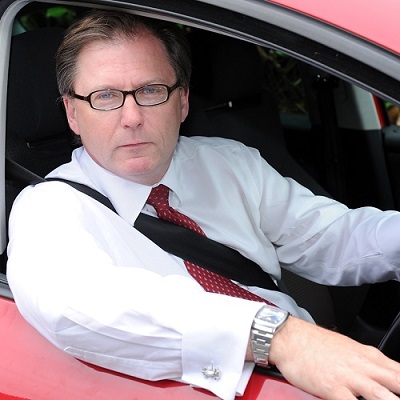For some years now the Royal Automobile Club has set an annual design challenge to the students on the Royal College of Art's Intelligent Mobility masters programme, and more recently invited the RAC Foundation to get involved.
This week we are publishing a full write-up of the 2019 challenge.
We asked the students, who come from the four corners of the globe, to turn their minds away from the endlessly fashionable issues of urban mobility towards the places where many of us actually live: even as our city conurbations have spread out to absorb surrounding settlements, many of us still inhabit what might be thought of as 'satellite' or 'dormitory' towns and villages, with at least one member of the household commuting into the city for work.
The commission for the challenge was born of the fact that even if these commuters might use mass transit options for the trunk of their commuting journey, they often face something of a 'first-and-last-mile' challenge in getting between home and the railway station.
Others living in these places, who don't commute into the city, might be making relatively short trips in places where public mass transit was never likely to be a viable option – even before the recent concept of 'social distancing' became a thing - because the population simply isn't large enough to generate enough demand, added to which narrow streets and country lanes create their own environmental and road safety issues.
So the challenge we set the students was to cast their creative minds ten or more years hence and think about the transport needs of people, as illustrated by one typical small rural town in East Sussex.
The purpose was not to arrive at a template for a particular transport service or vehicle, but through the design process to draw out the factors that should shape each in the future, as new technology and new materials open up the prospect of wholly new approaches.
The designs in this report might not be headed to commercial production anytime soon, but the themes that emerge are relevant and will hopefully be thought-provoking material for all involved in developing today's transport solutions.
Because what comes through most sharply is an appetite to re-connect people with places and with each other, whilst recognising that personalised travel is still likely to have its place.
But how do we – how should we – build that into our thinking about a post C19 locked-down world?
What if those daily commuters were travelling to office jobs that no longer require or even want them to turn up five days a week?
What sort of trips might become the new normal in those circumstances?
What if, as this project shows, we allowed ourselves to park all our preconceptions about transport and mobility options, our received wisdom, and re-imagined what might be possible given emerging technologies, and emerging materials?
Amongst the concepts to emerge is JUSTABUS, an on-demand, self-driving bus that's just half the width of a car, ideal for those bespoke journeys along the narrowest of thoroughfares.
Then there's WAYGO, a travel pod that can change in size depending on whether it is to carry one person or more.
And Star Road, an interactive lighting system with pressure-sensitive pads that illuminate the pathway when people tread on them, cutting down on power usage and the blight of light pollution.
An important strand of the project, and of the RCA programme, is the engagement with users. You and I might have a very clear idea about what the residents of wherever-we're-talking-about should want, but that's a long way from finding creative ways to ask local people what they really think.
The purpose of this challenge was never about creating near-market solutions – frankly the opposite. It was, and willcontinue to be, about asking the best and brightest transport designers of the future to allow their imaginations to roam freely, given their own expectations about where not just tech but other issues such as the whole-life sustainability of solutions might take us.
Be clear, these are the folk who are going to be designing the transport systems and vehicles that you and I will be travelling on in a few years' time.
Please, read the report in that spirit.
But don't be surprised to find a few years down the line that some of these concepts however zany, are nearer to market than you and I might have believed.

Steve Gooding, Director, RAC Foundation


